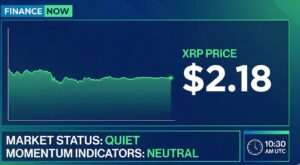Blockchain – a peer-to-peer network that allows for transparent information sharing within a business network. Since its inception in 2008, blockchain has proved to be a disruptive technology, and its disruptive nature includes the banking industry. For the banking sector, blockchain is a technology that can afford seamless, faster transactions. In turn, greater efficiency is brought into the banking industry, and objectives are met with lesser errors.
In this article, we will provide a straightforward approach to the use of blockchain in banking, its significance, and use cases in the banking industry.
Top use cases of blockchain in banking
These are some of the most effective ways of blockchain in banking.
1. Security:
Data is of utmost importance in banking transactions. It is with data that transaction information can easily be captured and lead to the diversion of funds. Blockchain has the potential to improve bookkeeping processes. Security can be ensured because each entry is decentralized and open to the parties concerned through their private keys.
2. Payment transfer:
By eliminating the need for third-party verification, blockchain makes payment transfer faster. Asides from this, blockchain also offers reduced costs for making transactions. Subsequently, banks can process transactions more quickly, and customers can complete transactions smoothly.
3. Compliance:
Since blockchain provides complete transparency, regulatory bodies can ensure that banks follow due compliance. They can monitor transactions effectively and efficiently determine where any illegal activity might exist. In addition, banks can trace and rectify transaction errors promptly.
4. Customers:
One issue with traditional banking systems is the long and winding process of verifying a customer’s details. However, with blockchain, all customer details are stored automatically on the chain. Banks can then easily access this information and save banks and customers the time spent on verification exercises.
5. Loaning:
Blockchain can allow banks to access prospective customers’ risk factors. When customers need a loan and approach the bank, a decentralized record of payment history will enable banks to see the lenders’ creditworthiness. In addition, it makes it easy for consumers to access loans since they can easily prove their risk factors.
Significance of Blockchain in Banking
As mentioned earlier, blockchain allows, among other things, more accessible and faster transactions. This effectiveness is made possible by blockchain’s transparent, immutable, and decentralized nature. Every of the use cases of blockchain in banking is maximized because blockchain eliminates the need for manual processes and central authorities.
In addition, its use of a distributed ledger allows it to store transactions in a permanent chain, thereby reducing the possibility of data errors. By prioritizing transparency, it increases visibility into the entire process of a transaction, from start to finish
Last thoughts
With the growing need for cost-effectiveness by banks and their consumers, blockchain in banking is bound to gain more relevance. However, it is up to banks to provide the necessary infrastructure to utilize blockchain optimally.
It could look like providing cryptocurrency accounts, incorporating the features that make crypto so popular. Banks are better equipped to provide better service, and customers are satisfied with banking services.




























